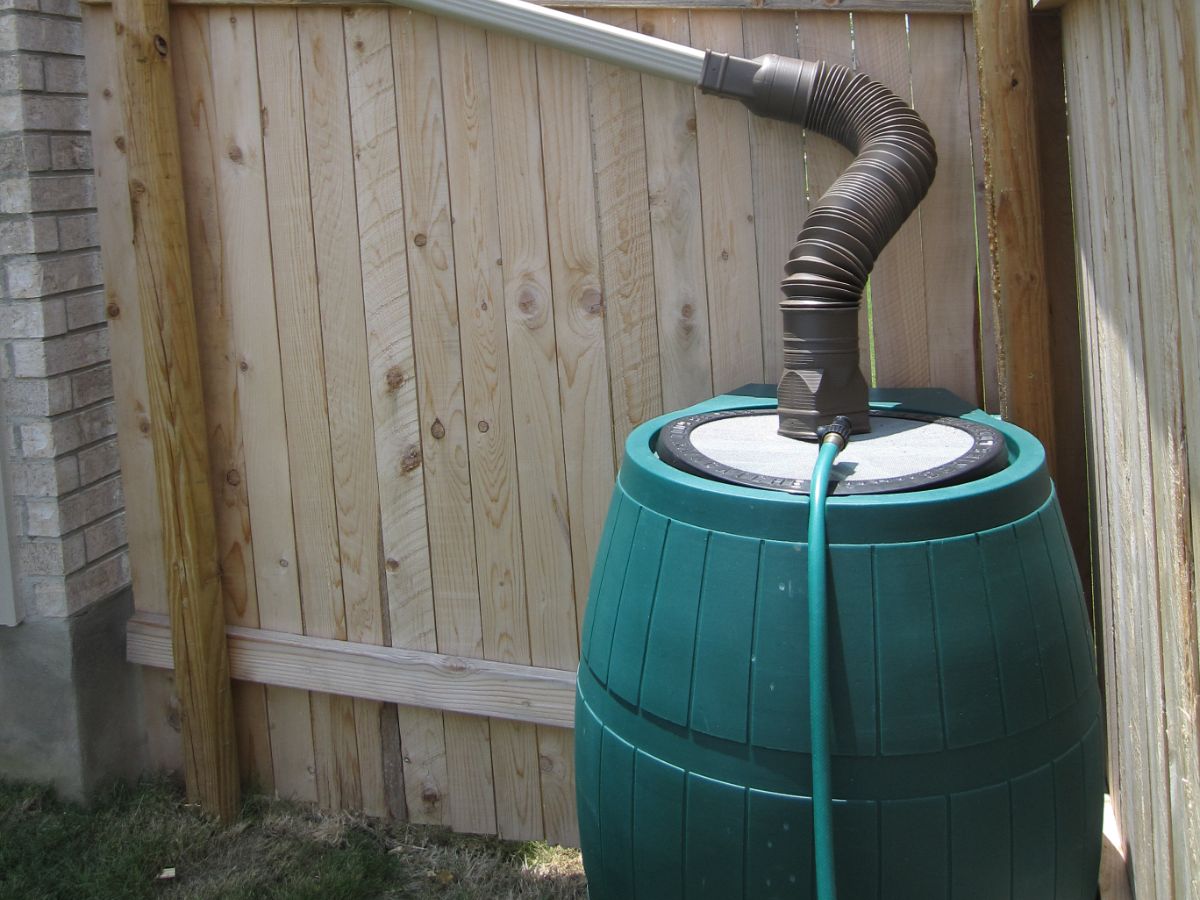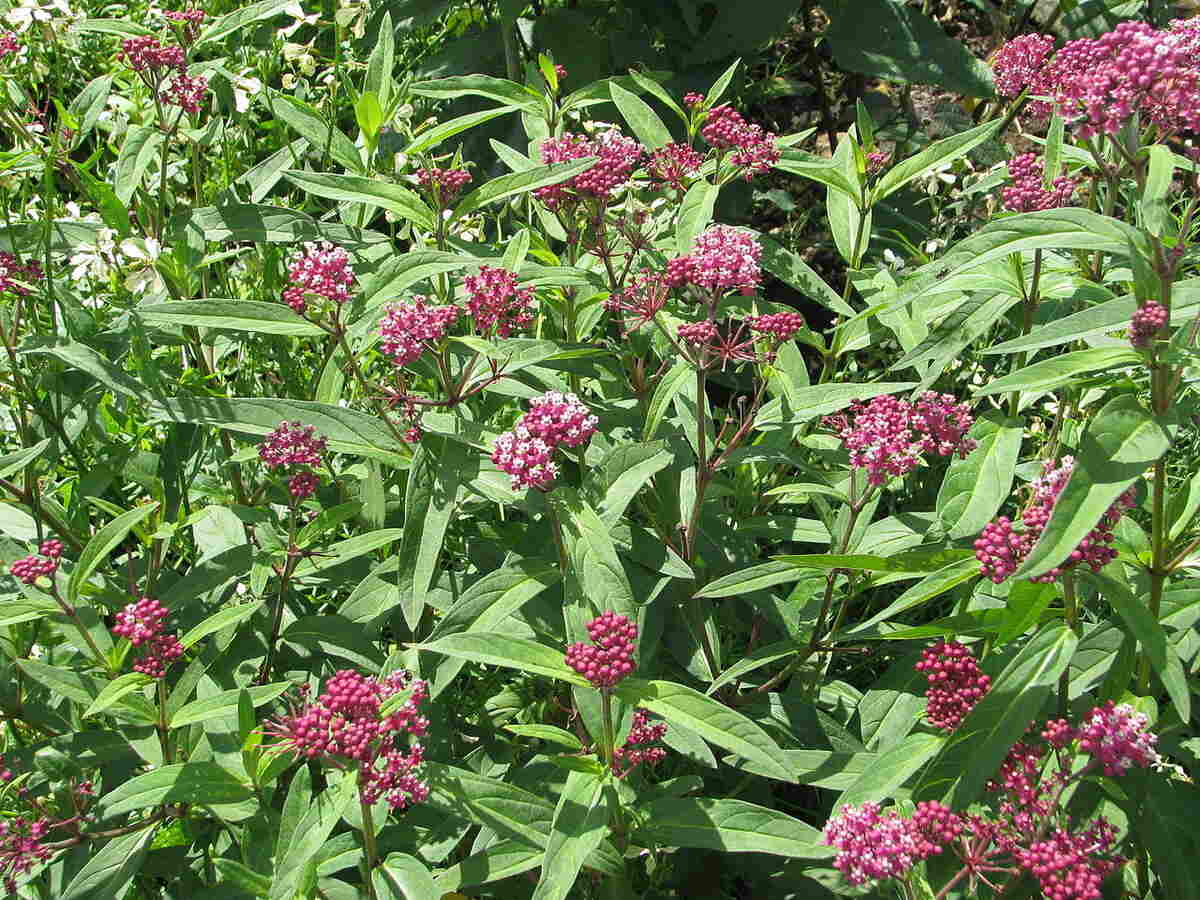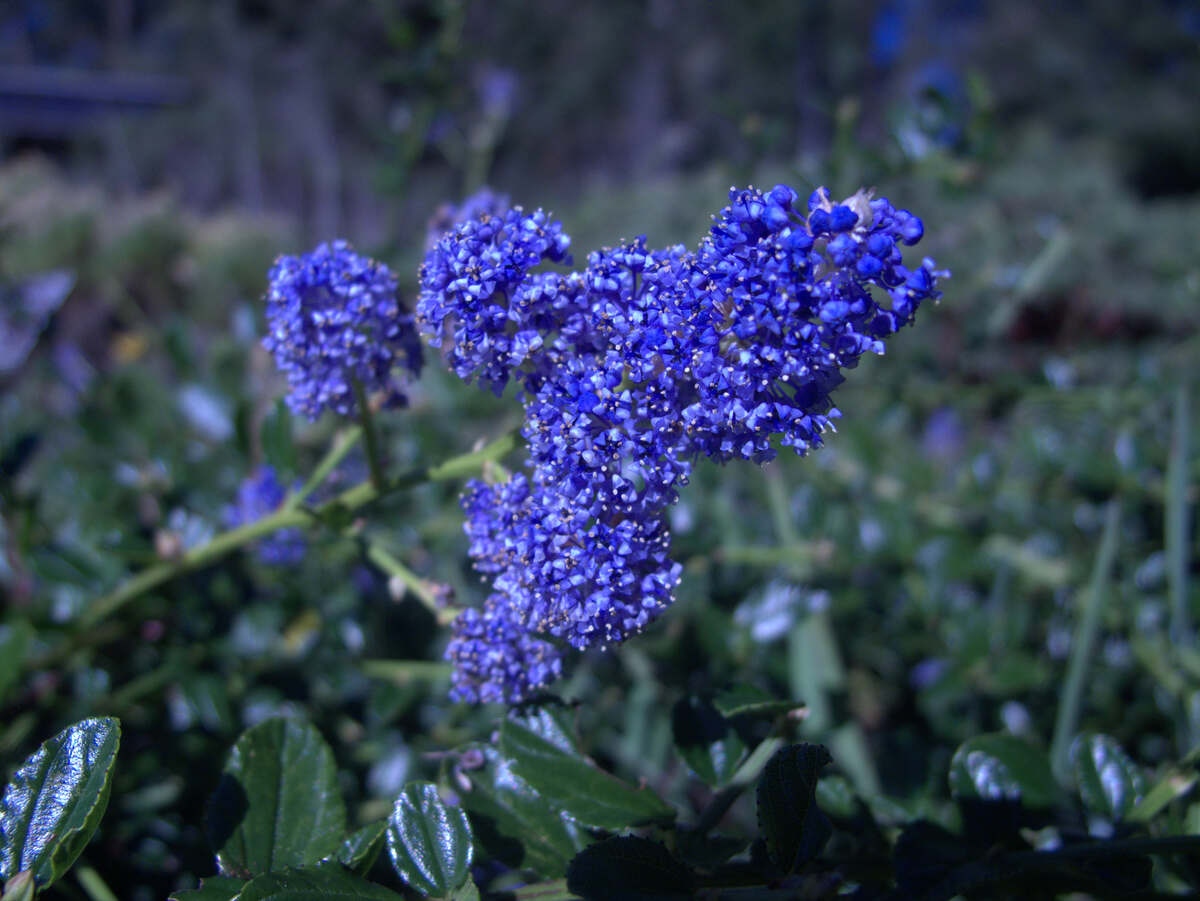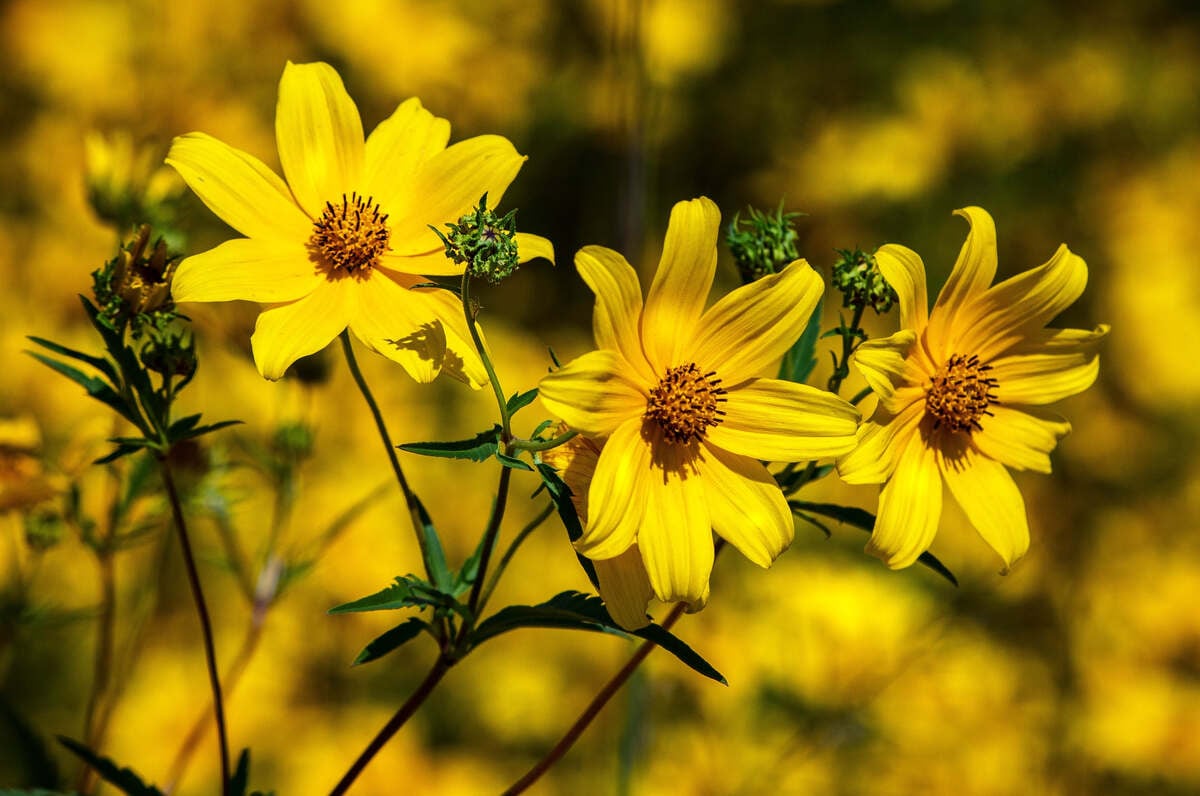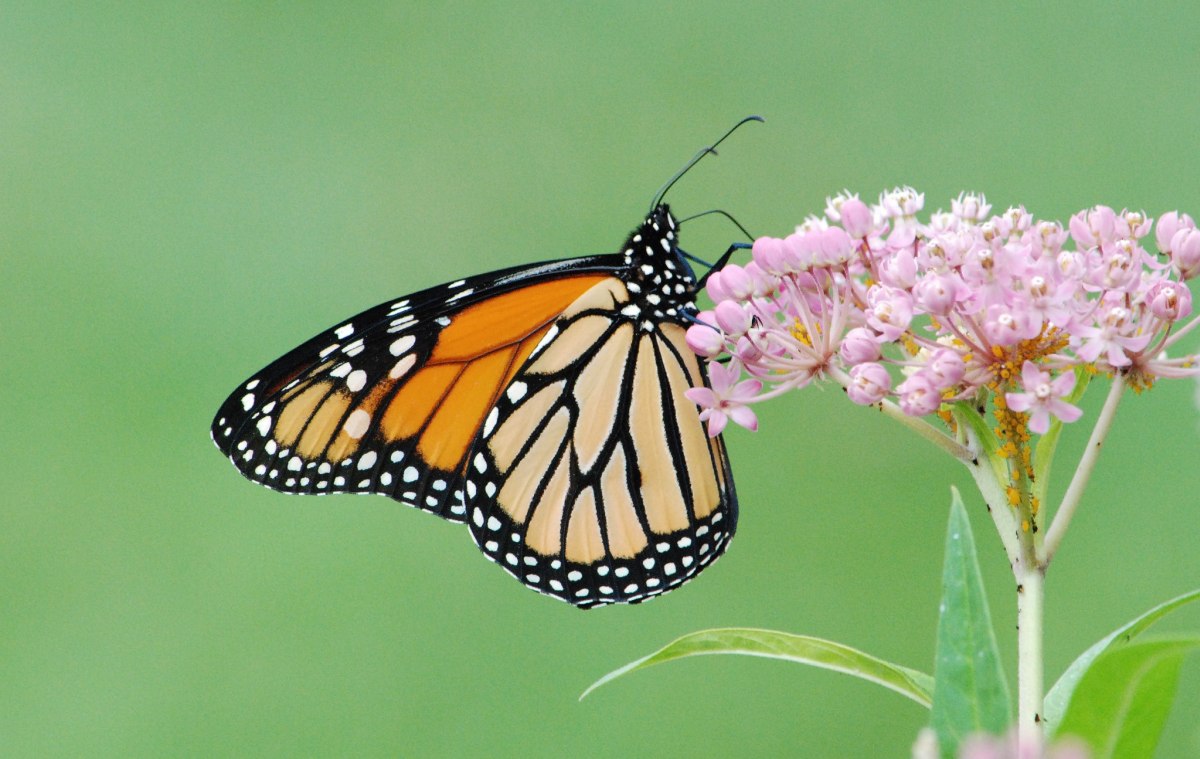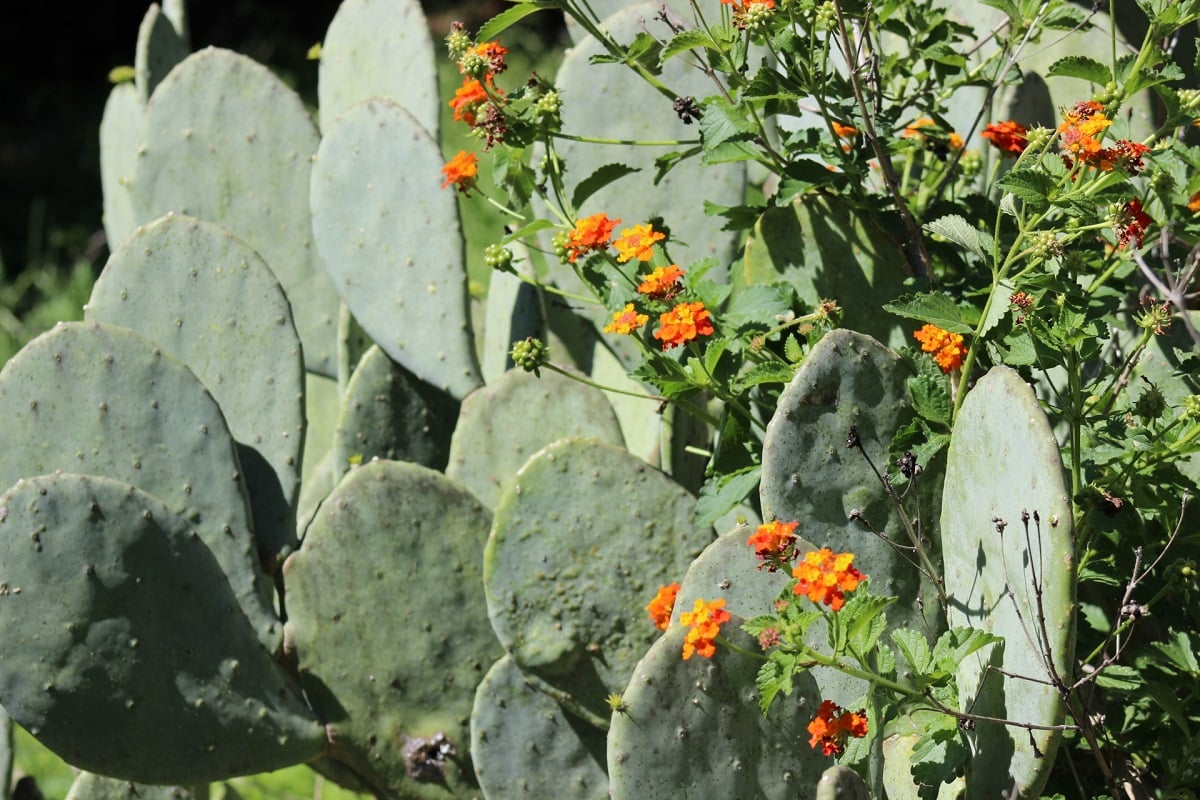
From the Great Plains to the Gulf Coast, the great state of Texas has a diverse range of local climates. Each region has its own beautiful native flora that could make a perfect addition to your landscape. That’s why we’ve collected 30 of the best native plants for Texas landscapes, divided by which region they thrive in:
But don’t take our word for it. We also have included an Ask the Experts section with insights and comments on Texas native plants from educators at Sam Houston State University, the University of Texas at Austin, and Austin Community College.
But first, what is a Texas native plant? Plants native to your region of Texas will thrive in your climate with minimal maintenance, and they’ll help you use less water and pesticides in your garden, too.
So, make gardening a little easier on yourself while benefiting local ecosystems with these native Texas wildflowers, shrubs, trees, succulents, and vines.
Native Plants of Central Texas
Bald cypress (Taxodium distichum)
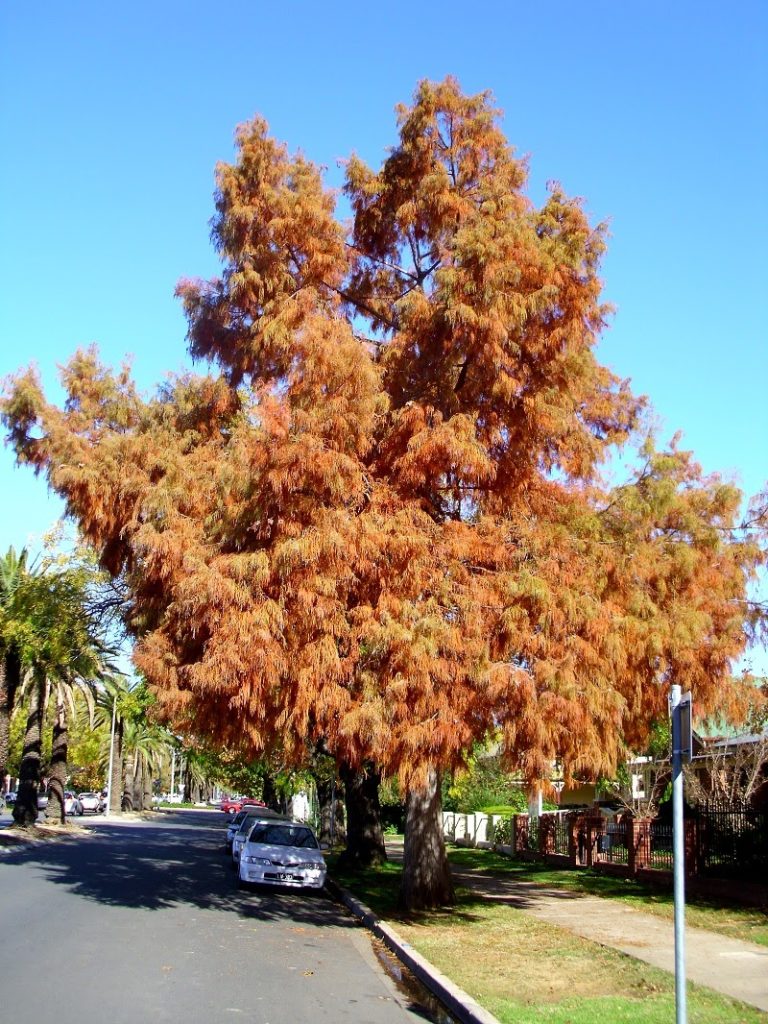
This tall conifer with spreading branches creates a spectacular show in fall when its leaves turn a brilliant orange. The bald cypress has a tendency to develop root “knees” that stick out from its tapered trunk.
- Plant type: Tree
- Hardiness zones: 4a-10b
- Sun: Full sun, partial shade
- Soil: Moist sandy, loam, or clay soils
- Duration: Deciduous
- Height: 50-75 feet
- Maintenance: Clean up fallen leaves and cones.
Black-eyed Susan (Rudbeckia hirta)

In summer, black-eyed Susans bloom in a blanket of bright yellow, daisy-like flowers. This native Texas wildflower is drought-tolerant and attracts butterflies.
- Plant type: Flower
- Hardiness zones: 3a-9b
- Sun: Full sun
- Soil: Tolerates most soil types
- Duration: Perennial
- Height: 1-3 feet
- Maintenance: Remove dead flowers to encourage more blooms.
Mexican buckeye (Ungnadia speciosa)
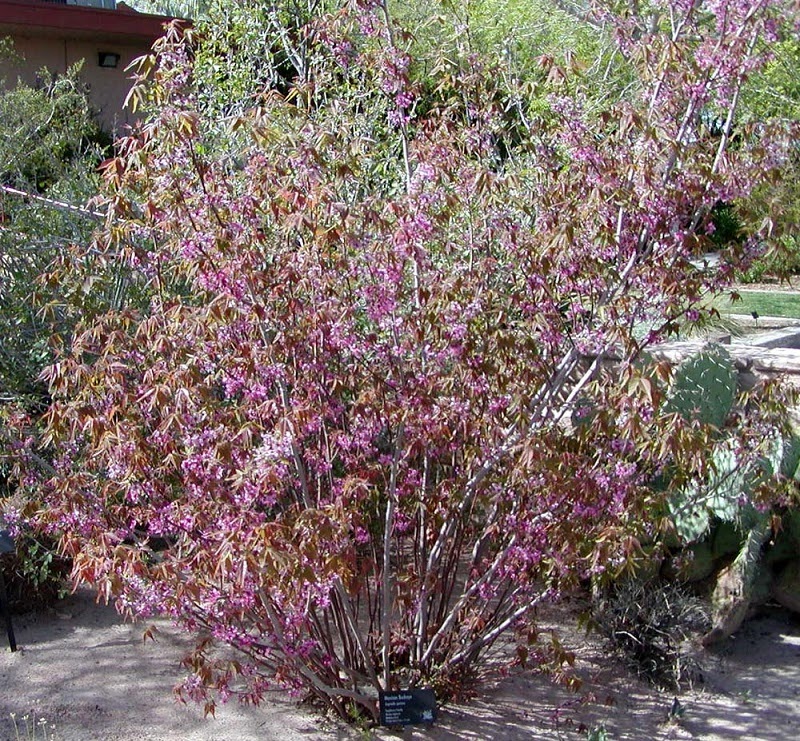
Depending on how you prune it, the Mexican buckeye can grow as a large shrub or small tree. The multi-trunked plant has light gray or brown bark and produces fragrant bright pink flowers that attract honey bees and butterflies.
Red yucca (Hesperaloe parviflora)
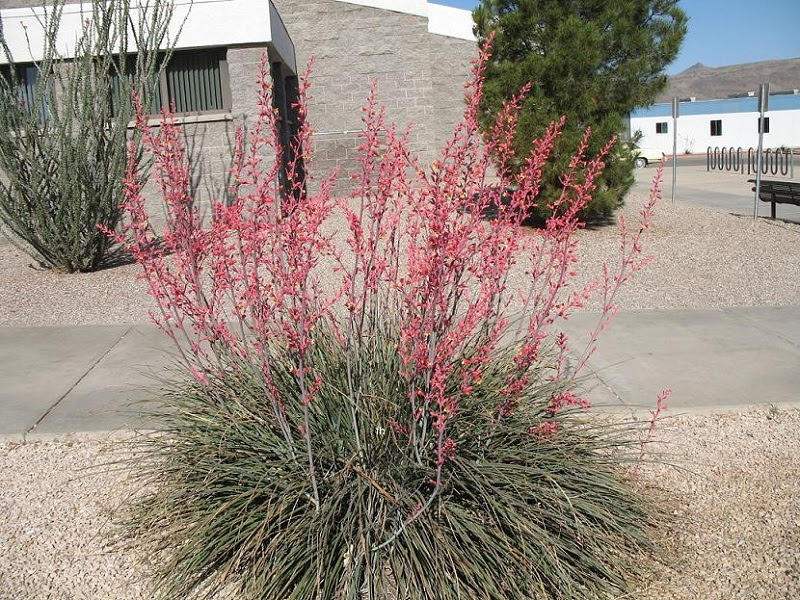
Though not actually a yucca, this succulent gets its common name from its blade-like foliage that resembles a true yucca plant. The red yucca produces tubular coral-colored flowers on tall stalks in late spring and early summer, and the flowers attract hummingbirds.
- Plant type: Succulent
- Hardiness zones: 5b-11b
- Sun: Full sun
- Soil: Dry sandy, loam, clay, or limestone soils
- Duration: Perennial
- Height: 2-5 feet
- Maintenance: Remove old flower stalks after flowering season.
Rock rose (Pavonia lasiopetala)
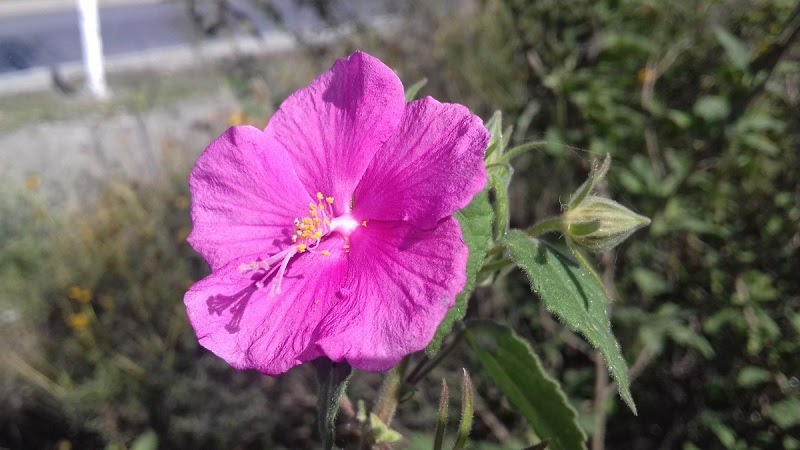
- Plant type: Shrub or tree
- Hardiness zones: 7a-9a
- Sun: Full sun, partial shade
- Soil: Dry, rocky soils
- Duration: Deciduous
- Height: 8 to 30 feet
- Maintenance: Prune as needed to maintain desired shape and height.
This small shrub blooms with pink hibiscus-like flowers in spring and summer that attract butterflies. In landscapes, rock rose works well as a ground cover.
- Plant type: Shrub
- Hardiness zones: 8a-9b
- Sun: Full sun, partial shade
- Soil: Well-draining limestone soils
- Duration: Perennial
- Height: Up to 4 feet
- Maintenance: Cut back in late winter to prevent excessive growth.
Yaupon holly (Ilex vomitoria)
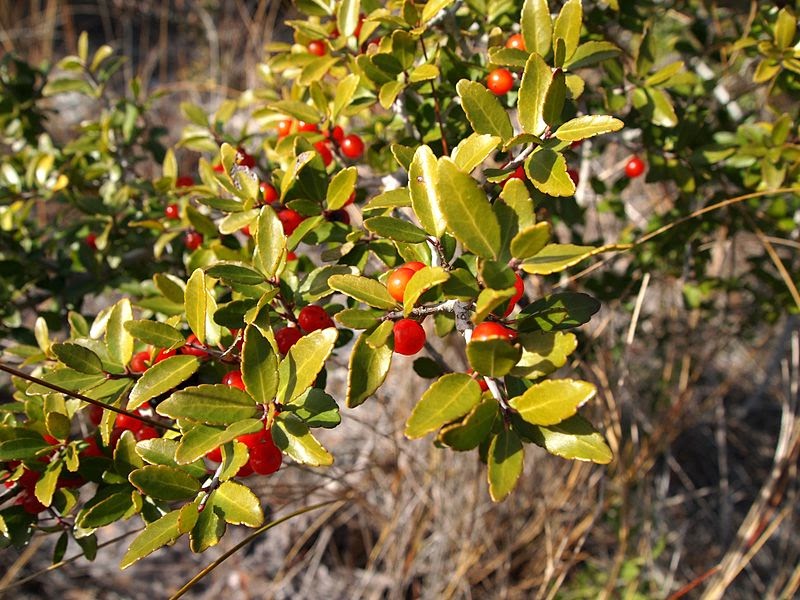
Yaupon holly can be single or multi-trunked, with gray bark, dark green leaves, and bright red berries that attract birds. You can grow this evergreen plant as a shrub with a pop of color or as a specimen tree.
- Plant type: Shrub or tree
- Hardiness zones: 7a-9b
- Sun: Full sun, partial shade, full shade
- Soil: Tolerates most soil types
- Duration: Evergreen
- Height: 12-25 feet
- Maintenance: Prune as needed to maintain desired shape and height.
Ask The Experts
30 Native Plants for Texas by Region
- Which region of Texas is easiest on gardeners and why? Which region has the most obstacles for gardeners?
- What negative effects can result from planting non-native invasive plants in a landscape?
- What impact does landscaping with native plants have on the greater environment?
- What is the most important factor when choosing the right Texas natives for your landscape?
- What type of soil is most common in each region of Texas? Which of these types is best for planting, and which is worst?






Which region of Texas is easiest on gardeners and why? Which region has the most obstacles for gardeners?
Each region of Texas has its own pros and cons. I am very partial to the East Texas region, having spent many years gardening there. The acidic soil and higher average rainfall allows for the growth of some of my favorite plants (pines, azaleas, camellias, hydrangeas, blueberries).
However, gardeners in this region may have difficulty with alkaline soil-loving species. The most difficult region to plant exotic plants could be far west Texas, for example El Paso, or in the panhandle. These areas can have extreme weather conditions — specifically heat and cold — that some of the exotic plants cannot tolerate.
This is where choosing native plants can really help gardeners have success. Instead of trying to force an exotic to work in an area, plant natives that can tolerate the climate of that region.
What negative effects can result from planting non-native invasive plants in a landscape?
Non-native species can have a wide variety of negative effects, and it depends on the exact species as to what those are. Some of those effects are ecological in nature. Non-natives can become invasive and outcompete native species for resources. Studies have shown that native pollinators and birds choose to visit native flowering species over non-native species (Hopkins, 2022).
What impact does landscaping with native plants have on the greater environment?
As stated before, native plants attract wildlife, namely native pollinators and birds. These plants are equipped to handle the climate in their native environment, as well as the soil types. Gardeners may find that the native plants need less inputs than their exotic counterparts. We have many fantastic native species that are drought tolerant and heat tolerant.
What is the most important factor when choosing the right Texas natives for your landscape?
I would say the most important factor in choosing the right Texas natives for your area would be to make sure you are selecting plants in your hardiness zone. Texas is a big state, with hardiness zones of 6b in the panhandle to 10a on the coast. Once you know your hardiness zone, you can narrow your list of options for your region.
What type of soil is most common in each region of Texas? Which of these types is best for planting, and which is worst?
Texas soils are highly variable. I would urge gardeners to visit the USDA NRCS Web Soil Survey site. You can type in your ZIP code and pull up massive amounts of information about your region, from soil type to depth of soil, to average annual precipitation.
There are native plant choices for every soil in Texas, it is hard to say what is “best” or “worst.” The knowledge of what you have will help you select native plants that will work for you.
Hopkins, K. A., Hall, C. R., Arnold, M. A., Palma, M. A., Knuth, M., & Pemberton, B. (2022). Consumer Preferences of Ratibida columnifera (Nutt.) Wooton & Standl. Floral Characteristics, HortScience, 57(3), 431-440. Retrieved Apr 14, 2023, from https://doi.org/10.21273/HORTSCI16233-21

Which region of Texas is easiest on gardeners and why? Which region has the most obstacles for gardeners?
I think “easy” is a relative term. It is easy to grow lush grasses in the coast, but it is also easy to grow cactus out west. A little creativity can get you a long way.
By understanding the soil profile, what it needs, and how to provide for it, you can very well grow grass in the South Plains. To address the question, I do think East and Southeast Texas are fairly “easy” to grow things. There is plenty of rain and generally great soil for inground gardens. Looking around, it is easy to see the mass of greenery all around you in these areas. Gardens are usually able to follow suit.
As a fun anecdote, my roommates and I were having trouble with a yard in Lubbock. There was a beautiful shade tree in the front yard (a rarity out there), but it was a little too shaded most of the time. The soil was also very hard and very sandy. I decided it was time to put my grass growing skills to use.
These folks I lived with at the time had horses, so I would help them muck the stalls and take all the natural fertilizer into this “dead” spot in the front yard. Weeks went by of collecting manure and working it into the ground.
We eventually were able to cultivate the yard with some heavy machinery, plant some tall fescue, wait, and then lounge around in our beautiful, shaded, and grassy lawn. It might be quite silly to mention it, but we were proud of growing grass in Lubbock.
What negative effects can result from planting non-native invasive plants in a landscape?
Invasive plants can be just as detrimental, if not more so, than invasive animals. Everyone is likely familiar with the impact feral hogs have on the environment. But plants such as bamboo and Chinese tallow can be categorized the same.
Planting invasive species gives the potential for these plants to spread, propagate, and take over areas that are not meant for them. This can occur even when the homeowner or gardener may feel it is safe. A deer or a bird could forage on the plant in question and unknowingly spread it to a nearby area out of sight and out of mind from our gardener.
Invasive species have no natural competitors or predators, so it is easy for these species to grow out of control. This is true for plants just as it is for animals. Chinese tallow or bamboo can choke out the natural hardwoods and pine in our national forests quickly. They obviously weren’t planted deep in the forest, but through their natural propagation techniques, they were able to spread there. This is what gardeners need to be aware of, in my opinion. Just because an exotic plant looks nice in your landscape and fits, does not mean it will stay in your landscape.
What impact does landscaping with native plants have on the greater environment?
I think that landscaping with native plants is the best of both worlds. Not only are there plenty of amazing, beautiful plants to choose from that will satisfy the gardener’s outdoor feng shui, but these plants also will be able to facilitate a healthy ecosystem.
The Texas bees, insects, small mammals, large mammals, predators, etc. all work in tandem with each other in a complex, finely tuned web. Having the proper plants in the ground will mitigate the urbanization that these animals face. Now, of course, a new housing edition has huge impacts on the environment, but gardeners can provide some relief by planting native plants that facilitate a good, healthy balance in the ecosystem around their home.
What is the most important factor when choosing the right Texas natives for your landscape?
The type of plant, regions of where it is native to, and preferred growth conditions are all important. By understanding these and planting something that already is native to the environment, we can provide a beautiful landscape that includes the animals around us.
What type of soil is most common in each region of Texas? Which of these types is best for planting, and which is worst?
This one is beyond my purview; however, I do have some anecdotal information. In the DFW area, where I am from, the Post Oak Savannah is full of black clay. This is a tough soil to work with since it is so sticky. The hay pastures we work with are sandier, not unlike a plain. However, it still has enough loam present to be fruitful for us.
In Southeastern Texas, there is plenty of loamy soil that facilitates great forest and plant growth. Out west, it is a totally different ballgame. Now, I do know that there are tons of very successful cotton farmers out there, but growing a landscape is more of a challenge compared to growing one in other regions of Texas. It is not impossible, but in my opinion, it is the “expert mode.”

Which region of Texas is easiest on gardeners and why? Which region has the most obstacles for gardeners?
I think each region has its own unique challenges and benefits. Soil quality and structure, rainfall, and even general climate will be different in each region. Some plants that do well in one region will not do well in another. Houston, for example, gets a lot of annual rainfall compared to Lubbock or El Paso. Central Texas has a lot of limestone and hard rock, heavy clay, and Blackland Prairie. A good tool for gardeners to determine their soil type is the Ecological Dynamics Interpretive Tool (EDIT).
With this tool, gardeners can get ecological data by using their address to help determine features that will help with plant selection. Speaking with local Native Plant Society of Texas (NPSOT) groups can help to develop a well-functioning native ecosystem.
What negative effects can result from planting non-native invasive plants in a landscape?
Planting a non-native plant species can harm the insect, bird, and wildlife population for a region, as well as introduce competition for native plant species that have adapted to a specific region for thousands of years. This can increase a need for more fertilizers or water depending on the invasive or exotic species.
On a biological level, non-native invasive plants can even change the type of bacteria or fungi that are living in the soil and change the soil life profile. Non-native plants in general add more work all around.
What impact does landscaping with native plants have on the greater environment?
Alternately, planting native species strengthens the environment that has been there for generations. Native plants use less inputs like fertilizer and water and even require less maintenance. Native insects, birds, and wildlife that use those plants for food sources and shelter have done so through countless life cycles and depend on native plants. Water and soil quality is improved if there is less need for chemical pesticide and herbicide applications that are needed for exotic insects or plants.
What is the most important factor when choosing the right Texas natives for your landscape?
One of the important factors when choosing native plants is diversity. The more types of native grasses, flowers, and woody plants gardeners introduce will help the overall survival rate during a hard winter or summer and give variety throughout the growing season, as well as provide habitats for insects and wildlife.
What type of soil is most common in each region of Texas? Which of these types is best for planting, and which is worst?
Texas has 10 main eco-regions that each have a different plant palate. Many plants can go between regions. This is a broad topic, and I would say the best practice would be to talk to local native plant growers and groups. Every planting situation will be unique so knowing your goals and having local native plant groups to help decide what would be the best options for you will give you the best outcome. Texas has over 7,000 native plants, so any goal can be reached.
Great sites that I use:

Which region of Texas is easiest on gardeners and why? Which region has the most obstacles for gardeners?
The region of Texas that typically is easiest to garden would be the traditional East Texas Piney Woods. This area is primarily acidic soil, moderate humidity, and higher rainfall rates. Regions that are typically more difficult to garden are those in far West Texas that also have lower water quality.
What negative effects can result from planting non-native invasive plants in a landscape?
Planting non-native invasive plants potentially negatively changes the ecosystem if the invasive plant dominates the vegetative cover in the area.
What impact does landscaping with native plants have on the greater environment?
Installing plants that are native to your region has benefits to a wide range of other organisms — from birds to bees to soil critters — as both food and for habitat.
What is the most important factor when choosing the right Texas natives for your landscape?
Several factors are very important when selecting native plants for your landscape. Probably the most important one is proper low temperature toleration at your location.
What type of soil is most common in each region of Texas? Which of these types is best for planting, and which is worst?
A soil map of Texas will show there are several soil textures found within each region of Texas — from high sand content to high clay content. Perhaps the exception is the Blackland Prairie region which is dominated by clay loams and clays. A true loam soil may be the ideal soil for your landscape or garden. Perhaps the soil presenting the most challenges is the high clay content soil that may be compacted as well. This would seriously limit many landscape plants.

Which region of Texas is easiest on gardeners and why, which region has the most obstacles?
Technically, I would say the best region for producing is going to be The Valley, in USDA Zone 9B/A&M Gardening Zone V. This is due to the fact that there is very little occurrence of hard freezes or other cold weather events, with temperature lows only reaching 25 to 30 degrees F. This will lend itself well to gardeners and the like. However, little land area is available for production, and the area itself is in a transitory zone of USDA zones, so mileage may vary.
Instead, the next best region for a garden in Texas, in my opinion, is going to be the area between San Antonio, Austin, Waco, and Houston. Going off of USDA planting zones, this would be the northern portion of 9a, a good portion of 8b, and a little bit of 8a. If using the A&M Agrilife Gardening Zones, this will be a good chunk of Zone 3. While it is very possible to have a garden in a majority portion of the state, I’d say that this region is going to be the easiest to grow in. There are a few reasons for this:
- There is a wide variety of soil types, depending on where in this area you are living. This is where the Blackland Prairie ecoregion comes together with the Oak Woods and Prairies, as well as the Cross Timbers and Prairies. As such, there are both sandy and clayey soils available in the region. There is some variation, but because of the historic presence of natural grasslands, there is a high quantity of organic matter already available in the soil. This lends itself well to gardening philosophies that use compost/organic amendments to work with microbes and soil biology.
- Rainfall is adequate but not so much so that excess moisture will be an issue. Areas in this region typically receive around 25 to 40 inches of rainfall per year, which is an adequate amount to reduce reliance on irrigation. Of course, there is nuance, like drought years, but generally, this is a great amount for gardening.
- Sunlight is a bit difficult to measure, but this region receives 100% of the national average for solar radiation, so plenty of sunlight is available for growing plants.
- Temperature in this zone typically experiences only a few hard freezes per year, and the average low is about 10 to 20 degrees F. This lends itself well to perennial garden plants that can handle a freeze or two, and allows for enough seasonality between growing times to grow both cool- and warm-season gardens.
The most difficult region to garden, in my opinion, will be far West Texas and Southwest Texas in USDA Zones 8a and 7b (A&M Gardening Zone 2). This is simply due to the high annual temperature, low rainfall (5 to 8 inches per year), and extremely high levels of solar radiation, up to 130% of the national average in some cases. These arid environments also have soils that are prone to salinization, degradation, and are typically of poor quality in comparison to what else we have available in the state.
What negative effects can result from planting non-native invasive plants in a landscape?
There are a few things. To understand this, we have to understand how an ecosystem works. I’ll do so briefly (though I could say much more).
An ecosystem consists of all living and non-living factors that are present in an environment and how they interact. Each and every thing plays a role, has a job, or serves some purpose. When we remove one of those things, a void is created, and nature fills voids. Commonly, when making a garden or building a development, etc., land is cleared and those players of the ecosystem that existed are now removed, creating a void.
When we then fill that void with invasive, non-native plants, such as turfgrass species or landscaping plants not from the region, these non-natives tend to grow very vigorously. They have no natural checks and balances that exist because they are not in the natural system they evolved to live in. As such, they can run rampant and grow wild, taking over areas of the garden (or outside of the garden, and into the greater environment). Once they have escaped the garden, they become ingrained to the natural landscape, outcompeting the plants that have not evolved alongside the non-native.
A good example of this is Ligustrum japonica (Japanese privet): This plant was utilized in landscapes extensively over the last few decades, and is now an extremely invasive plant throughout large areas of Texas. Bermudagrass (Cynodon dactylon) — originally native to Africa — is another example, probably an even better one as we all know how hard it is to pull Bermuda and how vigorously it spreads.
What impact does landscaping with native plants have on the greater environment?
I always say that natives should always be the answer if a homeowner ever has the option between a native and a non-native! There are a few reasons that native plants are a better option:
- Natives use less water and typically require fewer nutrient additions. Because these plants have already gone through millennia of evolution in this location, they are adapted to the conditions present; meaning they have already figured out how to survive on the amount of rainfall we receive every year. They have adapted to the level and proportion of nutrients available in our soils as well as the textures and pH of our soils. Because of this, they require less resource input and are an overall plus for the environment.
Bonus: This means they can be used in xeriscaping. Xeriscaping does not have to mean rocks, gravel, and cacti. There are many gorgeous xeriscape gardens and landscapes that use natives, and don’t look like the desert.
- Natives have formed ecological relationships with wildlife and other living factors of the environment. For example, native pollinators in our area have evolved to consume the nectar and pollen of our native species. Of course, any floral resources we make available to them are going to benefit their dwindling populations. However, if we capitalize on relationships that already exist, we may see a greater result.
- As we talked about with the non-native species, these plants are often outcompeted by invasive plants in natural environments. Because evolution has not created a way for these plants to fight off invasive species, growing natives in our gardens and landscapes allows more native species to survive and combat the threat of invasive plants. This conserves their genetic diversity and protects against the loss of plant populations.
What is the most important factor when choosing the right Texas Native for your landscape?
I would say the most important factor, first and foremost, is if the plant will grow in your type of soil.
For example, something adapted for a sandy type of soil is not going to do as well in the clayey soil of the Blackland Prairie or vice versa. It may survive but would not be at full potential. Additionally, other soil factors such as pH play a role. Some plants prefer slightly acidic pH, most prefer neutral pH, and matching pH requirement to the plant’s preference is important for things like the availability of nutrients.
Speaking of nutrients, that is another factor associated with soil — some plants are very heavy feeders, some plants do not require as much. I’d say most natives won’t require much of a nutrient input, but some cases do exist.
The next most important factor I would say is sunlight requirement. A plant that naturally grows on the understory of a semi-forested region would not do well in a full-sun environment, and vice versa. Honorable mention would be moisture/rainfall, but that can be supplemented via irrigation and watering.
Regardless of the requirement, information on these factors is usually available via internet or on the plant label at a nursery. Using these resources you can find plants that will match the conditions of your garden or landscape.
What type of soil is most common in each region of TX? Which of these is best for planting, and which is the worst?
It is a bit too difficult to answer this question in terms of specific soil types. In soil, individual types can be hard to distinguish and may be very similar with only one or a few traits being different at the most specific level. However, instead, I will answer in terms of soil orders. This is a classification of soil types that is a bit more general but still specific enough to distinguish from one another. There are 12 soil orders found across the globe, and seven of them are found in Texas.
With that said, I would say that mollisols and/or alfisols are the most prevalent across most of Texas. These will be found throughout A&M Gardening regions 2, 3, and 4. Alfisols are typically high in fertility, and have accumulations of clay in the lower regions. Mollisols are characteristic of areas that are or were grasslands, and have a very dark upper region of the soil, due to the high level of organic matter deposited via plant matter from said grasslands. Mollisols are also very fertile for this reason.
In Zone 5, there is a mixture of alfisols, entisols, inceptisols, and mollisols. The description above for alfisols and mollisols is also true here. Additionally, inceptisols are geologically young soils, with little development, and are not as fertile for plant growth as alfisols or mollisols. Entisols, then, are also a soil that does not show a lot of development but can be extremely variable in how fertile they are.
Zone 1 mainly consists of aridisols. These are going to be dry most of the year, and have high levels of calcium carbonate, silica, other salts, and gypsum. These are typically not very productive, as they are found in regions where water for plant growth is only available about 90 days out of the year.
Out of all of these soil types, I would suggest that mollisols and alfisols are going to be the most fertile. Due to their accumulation of organic matter, the biology of the soil is typically very active and the use of sustainable practices only enhances their ability to produce. This can also be seen in a map of agricultural production throughout the state, where a lot of our crop production occurs over mollisols and alfisols.
I would also suggest that aridisols, found in Zone 1, will be the worst for a garden or landscape, due to the low availability of water throughout the year as well as the buildup of salts and calcium in the soil.
Native Plants of North Texas
Ashe juniper (Juniperus ashei)
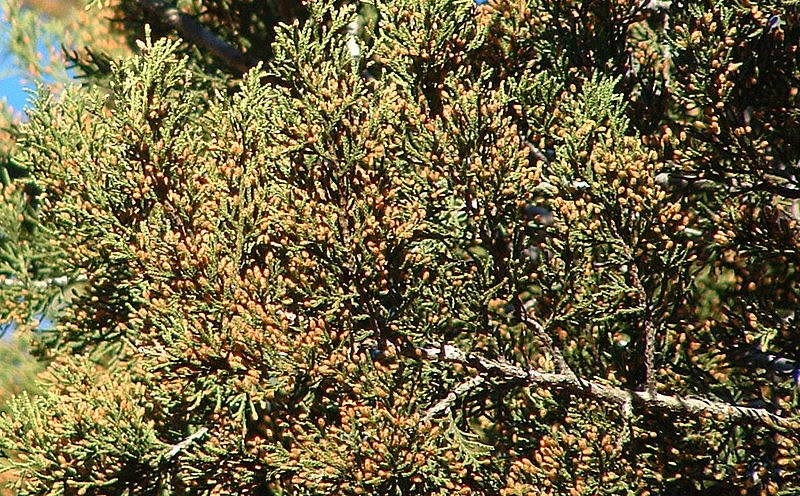
Ashe juniper, aka Texas cedar, aka blueberry juniper, has dark green foliage with a pleasant scent. Male ashe junipers turn a burnt gold in winter when they’re covered in pollen (pictured), while female trees grow a blue fruit that resembles blueberries.
- Plant type: Tree
- Hardiness zones: 7a-9b
- Sun: Full sun
- Soil: Any well-draining soil
- Duration: Evergreen
- Height: Up to 30 feet
- Maintenance: Make sure soil doesn’t stay wet, otherwise roots will rot.
Chinquapin oak (Quercus muehlenbergii)
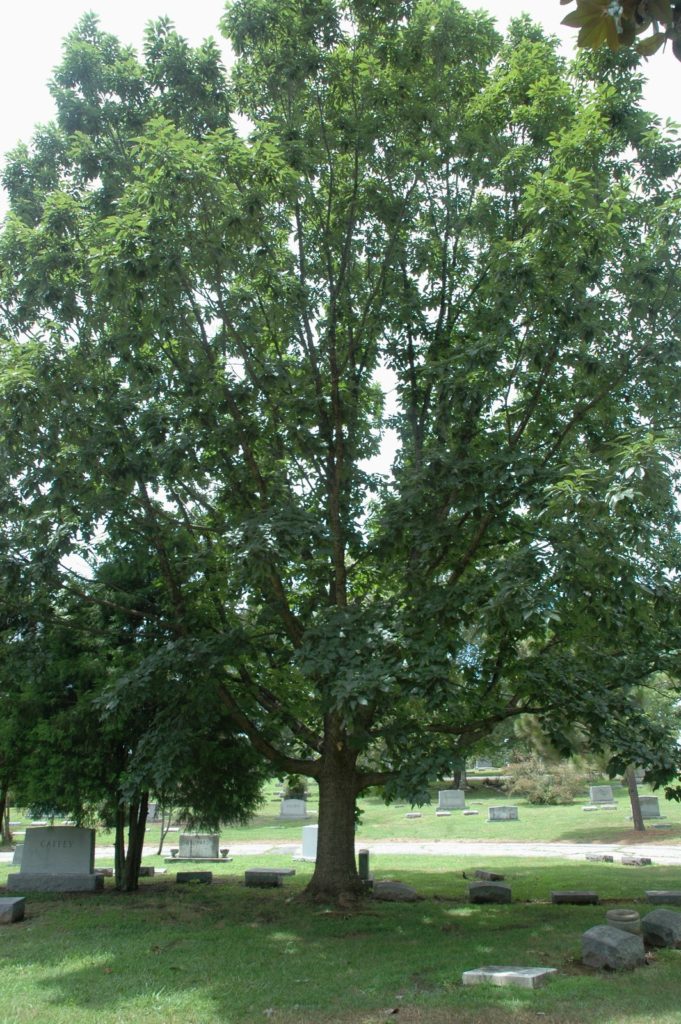
The chinquapin oak grows relatively fast and has spreading branches, so it makes a perfect shade tree. In fall, its leaves turn vibrant reds, oranges, and yellows.
- Plant type: Tree
- Hardiness zones: 3a-9a
- Sun: Full sun, partial shade
- Soil: Well-draining rocky or sandy soils
- Duration: Deciduous
- Height: 45-110 feet
- Maintenance: Clean up fallen leaves and acorns.
Crossvine (Bignonia capreolata)
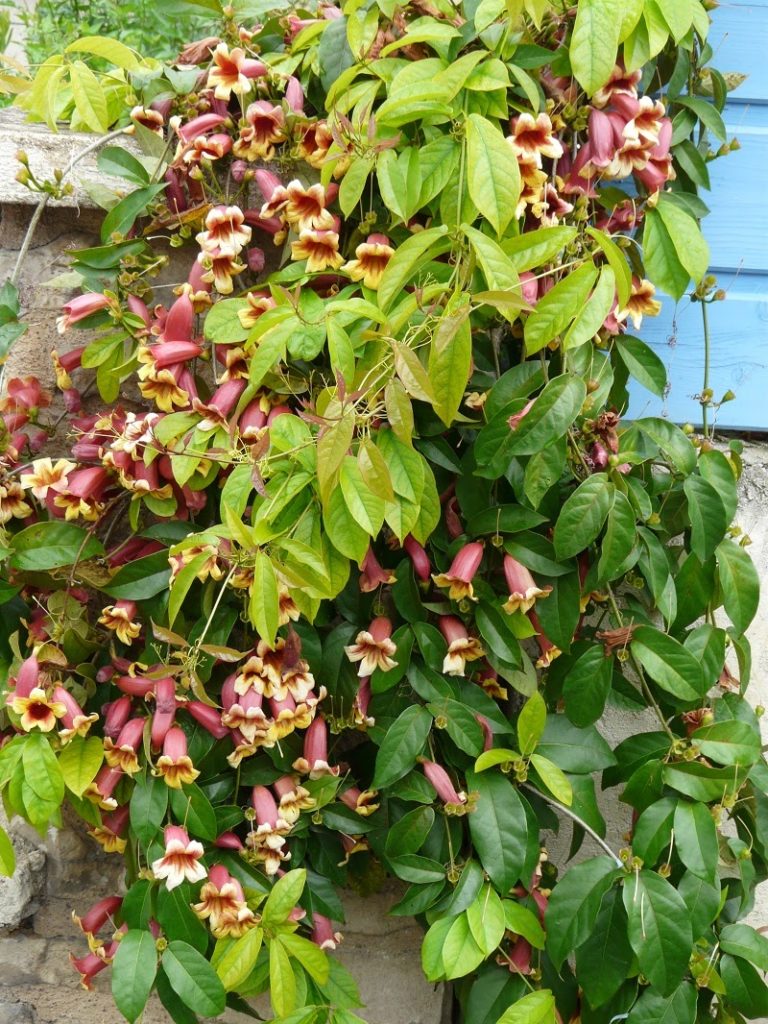
Crossvine is a climbing vine that works well for decorating landscape features such as pergolas, arbors, and trellises. Its dark green leaves change to a purplish color in winter, and showy clusters of trumpet-shaped yellow, red, and orange flowers bloom in spring.
- Plant type: Vine
- Hardiness zones: 5a-9b
- Sun: Full sun, partial shade
- Soil: Moist but well-draining soils
- Duration: Perennial
- Height: Up to 50 feet (climbing)
- Maintenance: Cut back in spring to encourage healthy new growth.
Dwarf palmetto (Sabal minor)
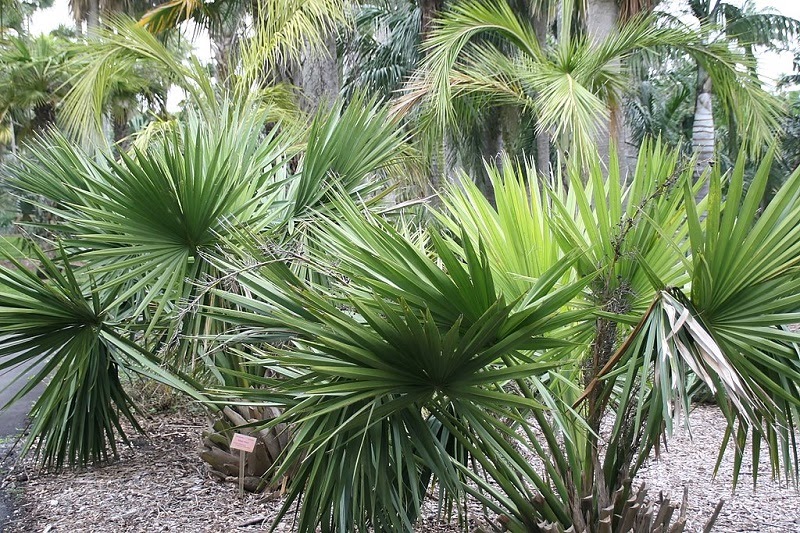
Dwarf palmetto is a drought-tolerant, cold-hardy, slow-growing palm with fan-shaped pale green or bluish fronds. In a landscape, you can use dwarf palmetto as a specimen planting, for ground cover, or even in a privacy hedge.
- Plant type: Palm
- Hardiness zones: 7a-10b
- Sun: Full sun, partial shade
- Soil: Any moist but well-draining soils
- Duration: Evergreen
- Height: 5-8 feet
- Maintenance: May need winter protection in below-freezing temperatures.
Lemon beebalm (Monarda citriodora)
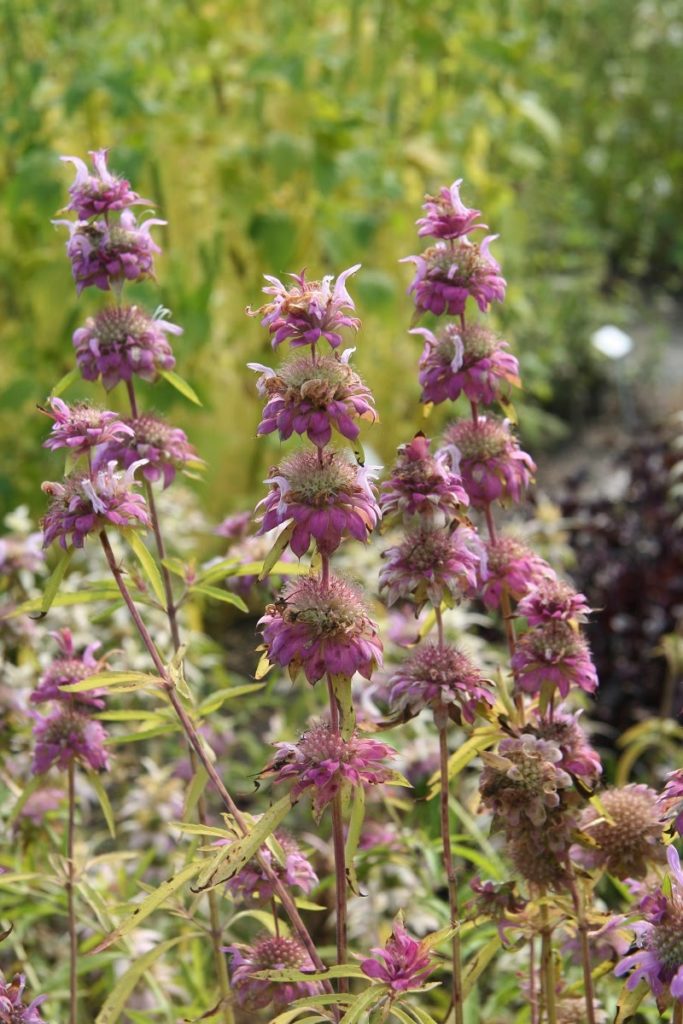
Lemon beebalm, aka lemon mint, aka horsemint, produces unusually shaped flowers in summer that range in color from lavender to pink and attract pollinators like bees and butterflies. The leaves of the lemon beebalm produce a pleasant citrus scent when rubbed or crushed.
- Plant type: Flower
- Hardiness zones: 2a-11b
- Sun: Full sun, partial shade
- Soil: Dry sandy, rocky, or loam soils
- Duration: Annual
- Height: 1-2 feet
- Maintenance: Remove dead flowers to encourage more blooms, and cut stems back to the ground after flowering season.
Purple coneflower (Echinacea purpurea)
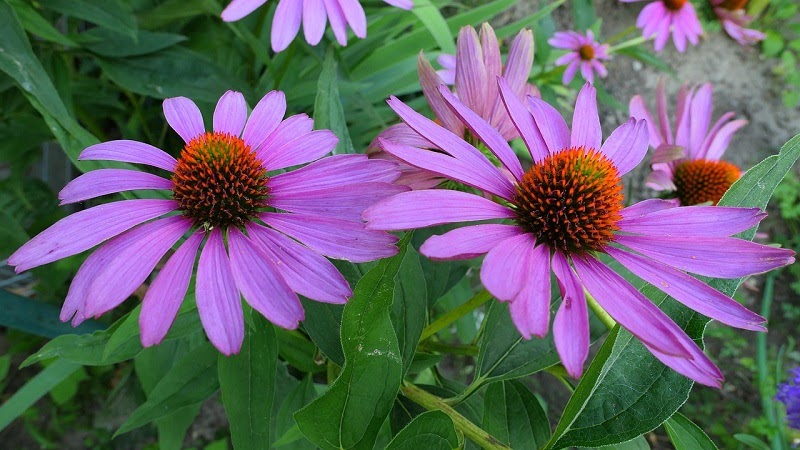
The purple coneflower, a common Texas wildflower, features lavender petals around a spiny brown center. These flowers are easy to grow and rewarding, with bright blooms that come out in spring and last throughout summer.
- Plant type: Flower
- Hardiness zones: 3a-9a
- Sun: Full sun, partial shade
- Soil: Well-draining dry to medium soils
- Duration: Perennial
- Height: 2-5 feet
- Maintenance: Water 1 inch per week.
Native Plants of East Texas
Beautyberry (Callicarpa americana)
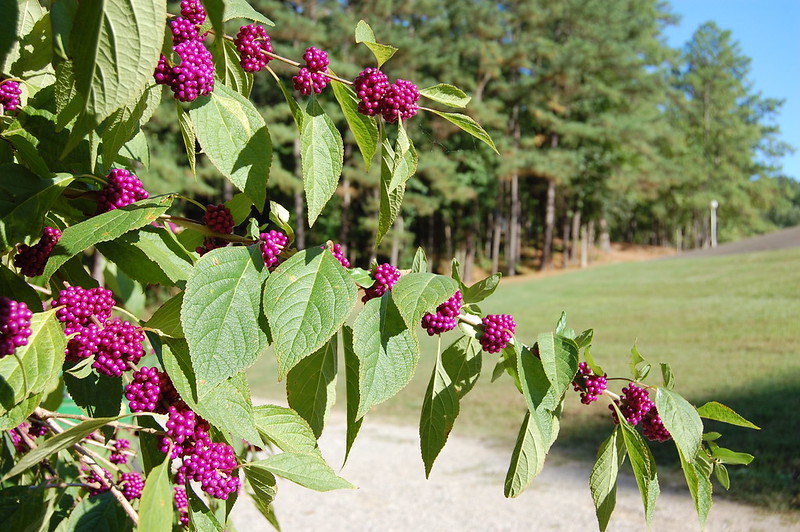
Beautyberry is a shrub with long, arching branches and bright green foliage. The plant’s main appeal, of course, is its striking clusters of bright purple berries that add an interesting pop of color to your landscape and feed local birds.
- Plant type: Shrub
- Hardiness zones: 6a-10b
- Sun: Full sun, partial shade
- Soil: Prefers rich soils but can sometimes grow in poor, sandy soils as well
- Duration: Deciduous
- Height: 3-8 feet
- Maintenance: Prune before flowering season to keep the shrub compact.
Southern sugar maple (Acer barbatum)
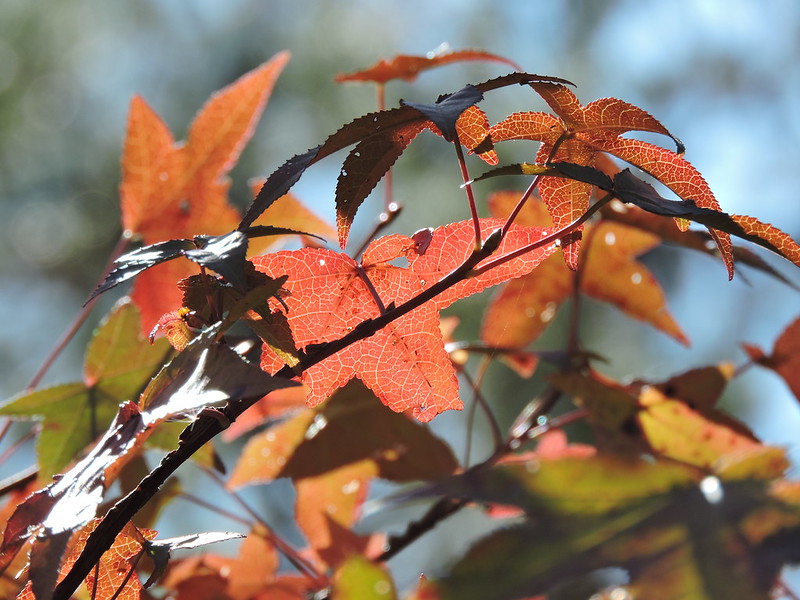
The southern sugar maple, aka the Florida maple, is a smaller and more heat-tolerant cousin of the northern sugar maple. It makes a great specimen or shade tree, and its leaves turn bright red, orange, and gold in fall.
- Plant type: Tree
- Hardiness zones: 6b-9a
- Sun: Full sun, partial shade
- Soil: Occasionally wet clay or sandy soils
- Duration: Deciduous
- Height: Typically 20 to 30 feet, can sometimes reach 60 feet or even more
- Maintenance: Water regularly during long dry spells, clean up fallen leaves in fall
Texas lantana (Lantana urticoides)

Also known as calico bush, the Texas lantana is a spreading shrub that blooms from late spring through early fall with clusters of vibrant, tubular flowers that attract butterflies and birds. Texas lantana makes a beautiful addition to any landscape, but don’t plant it near high-traffic areas: Its branches have spines, and its leaves are poisonous.
- Plant type: Shrub
- Hardiness zones: 8a-11b
- Sun: Full sun, partial shade
- Soil: Dry, poor soils
- Duration: Deciduous
- Height: 2-6 feet
- Maintenance: Cut back branches regularly to encourage healthy new growth.
Texas paintbrush (Castilleja indivisa)
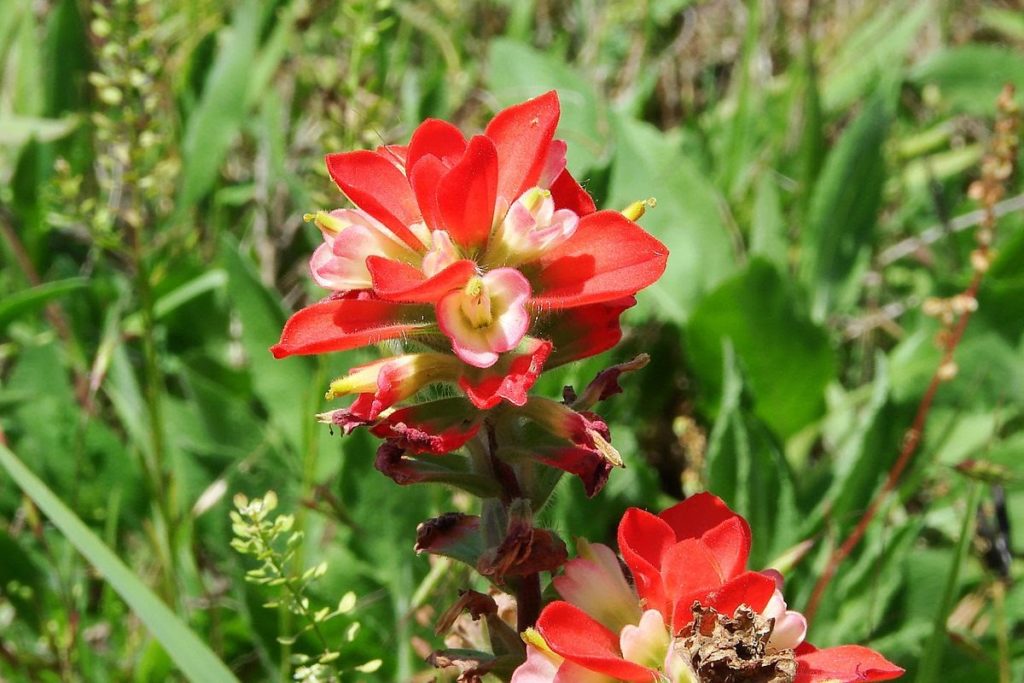
The Texas paintbrush is an interesting specimen, with small inconspicuous flowers surrounded by long, leaf-like bracts in vibrant red or orange. This drought-tolerant plant is beautiful but can be unpredictable, blooming perfectly one year and poorly the next for no apparent reason.
- Plant type: Flower
- Hardiness zones: 6a-11b
- Sun: Full sun
- Soil: Dry, well-draining sandy, loam, or clay soils
- Duration: Annual or biennial
- Height: 6-24 inches
- Maintenance: Allow the plant to reseed after flowering season if you want it to bloom again the next year.
Trumpet creeper (Campsis radicans)
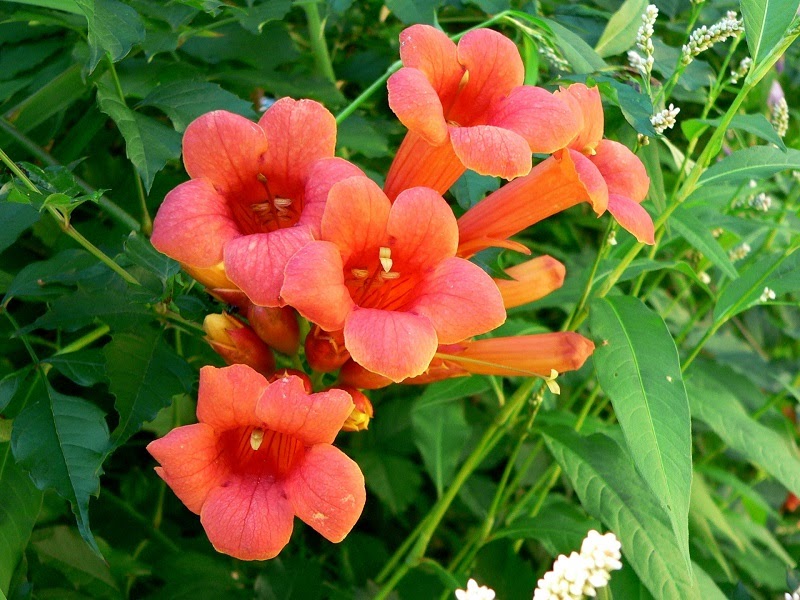
This fast-growing (sometimes even aggressive) vine is perfect for climbing up trees, walls, fences, or other landscape features. It produces showy, trumpet-shaped, bright red flowers that attract hummingbirds, but beware: Trumpet creeper can overtake other plants and become weedy, earning it the colorful nicknames hellvine and devil’s shoestring.
- Plant type: Vine
- Hardiness zones: 4a-10b
- Sun: Full sun
- Soil: Tolerates most soil types but flowers best with moisture
- Duration: Perennial
- Height: Up to 40 feet (climbing)
- Maintenance: Prune regularly to keep it contained, cut back branches in late winter or early spring to encourage bushier growth and more flowers.
Winecup (Callirhoe involucrata)
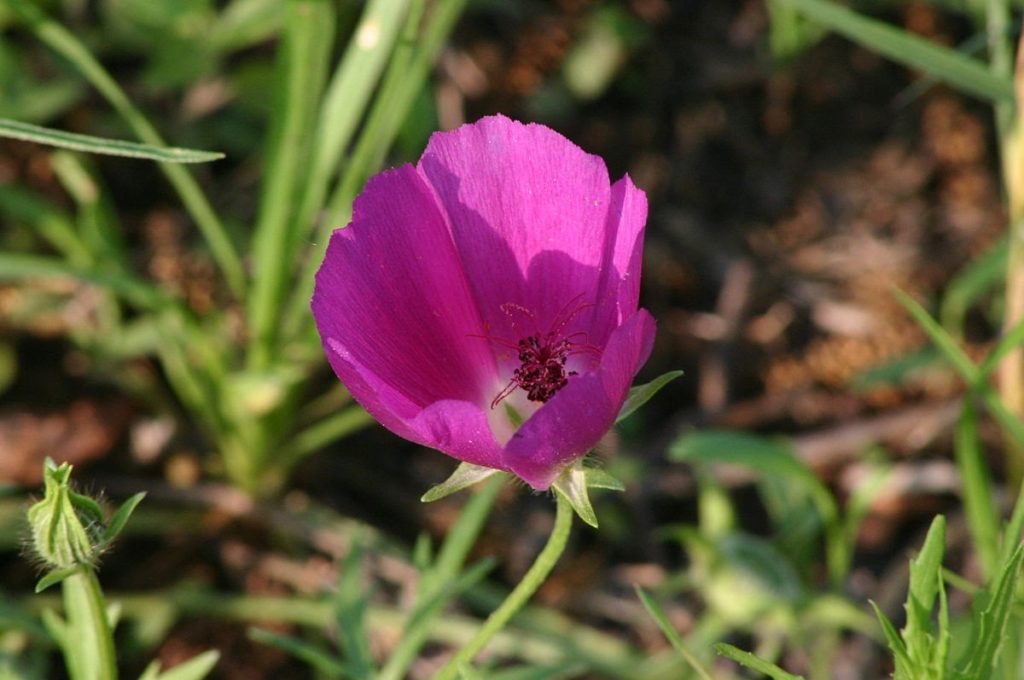
These cup-shaped, deep purple wildflowers have stems and foliage that spread along the ground and form a thick mat, making them a great choice for ground cover in landscaping. The drought-tolerant winecup, aka purple poppy mallow, blooms in spring, when its flowers open each morning and close each night.
- Plant type: Flower
- Hardiness zones: 4a-8b
- Sun: Full sun
- Soil: Well-draining rocky or sandy soils
- Duration: Perennial
- Height: 8-12 inches
- Maintenance: Remove dead flowers to prolong growing season.
Native Plants of South Texas
Coral bean (Erythrina herbacea)
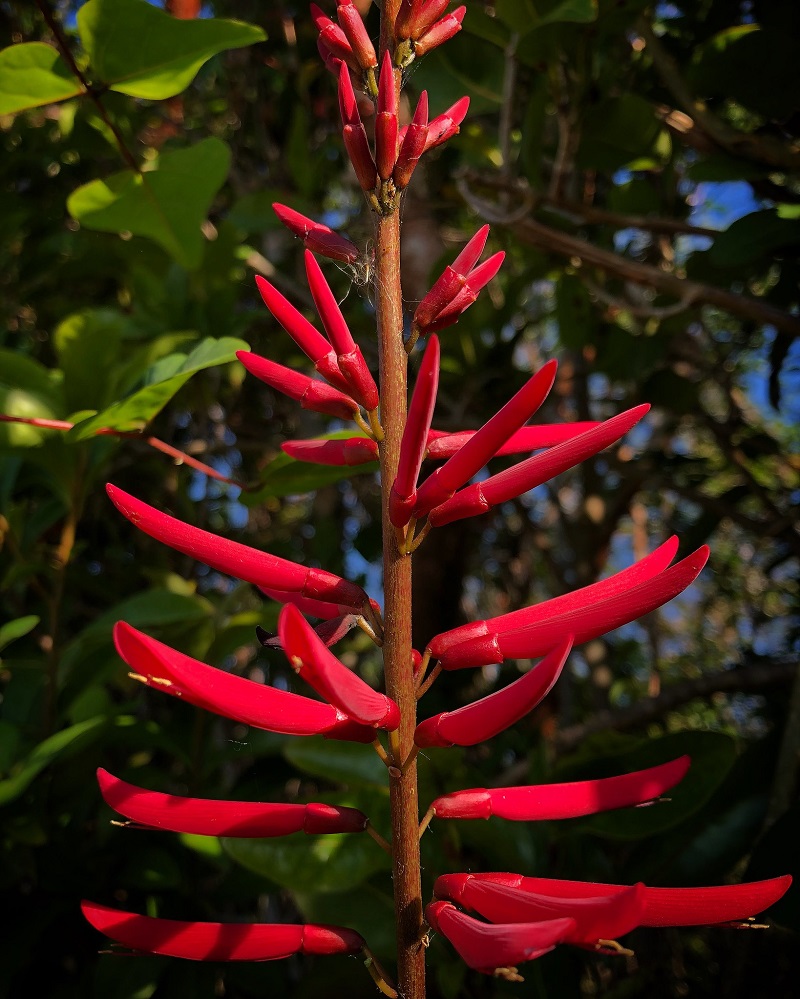
In South Texas, coral bean grows as a low shrub with glossy leaves and thorny branches (so be careful not to plant it in high-traffic areas). When the coral bean’s branches are bare in spring, the plant produces spikes of showy, bright red, bean pod-shaped flowers that can add an interesting element to your landscaping.
- Plant type: Shrub
- Hardiness zones: 8a-11b
- Sun: Full sun, partial shade
- Soil: Well-draining or sandy soils
- Duration: Deciduous
- Height: 5-15 feet
- Maintenance: Prune as needed to maintain desired shape and height.
Heartleaf rosemallow (Hibiscus martianus)
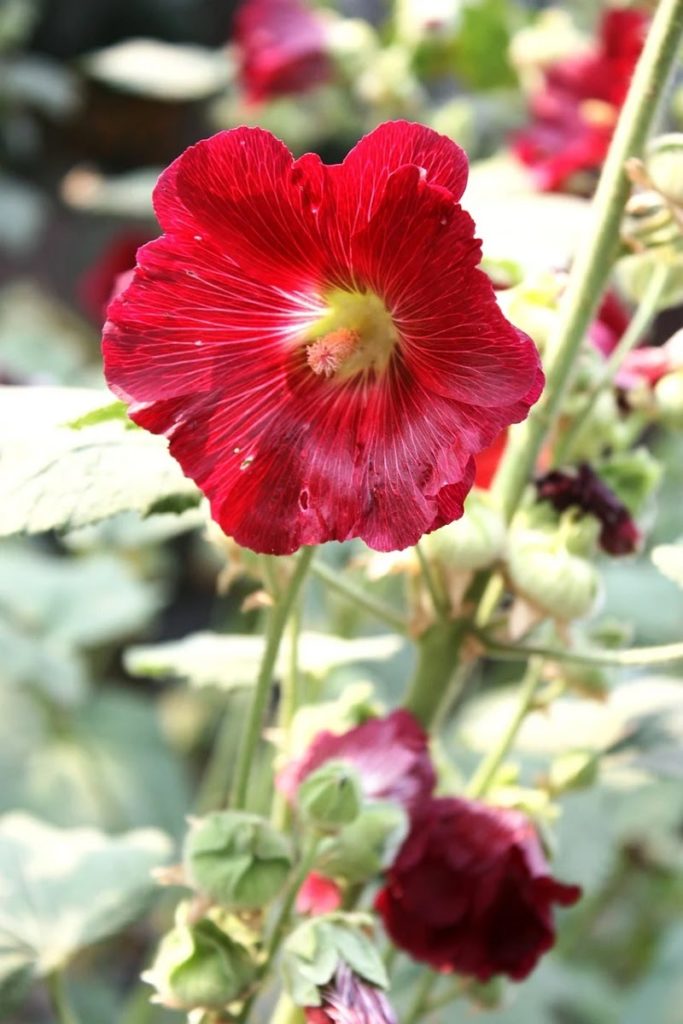
The heartleaf rosemallow is a type of hibiscus that produces beautiful bright red flowers year-round (as long as temperatures don’t dip below freezing). This drought-tolerant plant can add a tropical touch to your Texas landscape in every season.
- Plant type: Flower
- Hardiness zones: 8a-10a
- Sun: Full sun, partial shade
- Soil: Dry, well-draining gravelly or limestone soils
- Duration: Perennial
- Height: 1-3 feet
- Maintenance: Prune lightly to encourage compact growth and more blooms.
Texas mountain laurel (Sophora secundiflora)
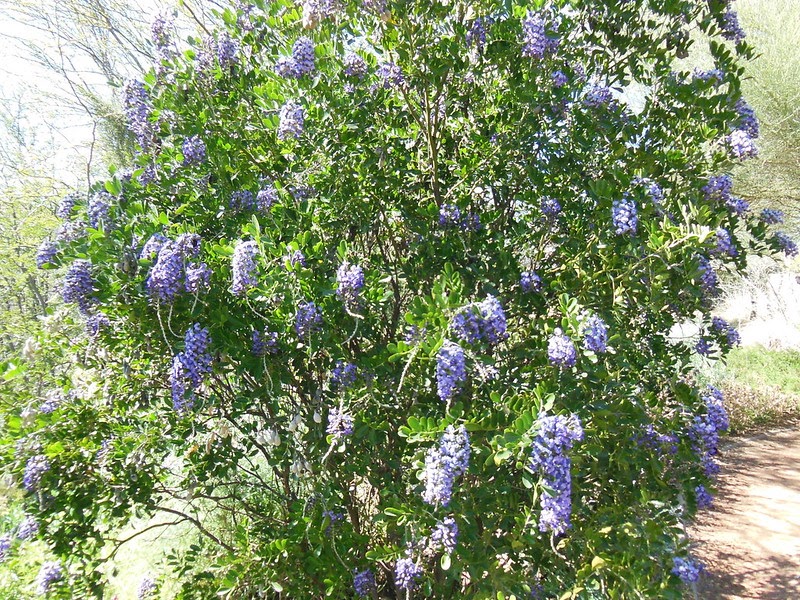
Also known as mescal bean, this multi-trunked plant can grow as either a large shrub or small tree depending on how you prune and train it. Texas mountain laurels have rounded, shiny leaves and clusters of small lavender flowers with a strong grape-like scent that attracts butterflies. This shrub is a great choice for Corpus Christi landscaping.
- Plant type: Shrub or tree
- Hardiness zones: 7b-10b
- Sun: Full sun, partial shade
- Soil: Any well-draining soil
- Duration: Evergreen
- Height: 10-35 feet
- Maintenance: Prune as needed to maintain desired shape and height.
Texas palmetto (Sabal mexicana)

The Texas palmetto is a very slow-growing palm that can eventually grow large, but typically, its trunk won’t even show above ground until it’s about 10 years old. When mature, the tree has a stout, thick, spiny trunk and fan-shaped fronds that can provide shade or simply add a tropical aesthetic to a landscape. South Texas is the only place in the United States where this palm grows naturally.
- Plant type: Palm
- Hardiness zones: 8a-11b
- Sun: Full sun, partial shade
- Soil: Tolerates most soil types
- Duration: Evergreen
- Height: Up to 50 feet
- Maintenance: Remove dead fronds and fruit stems.
Texas prickly pear (Opuntia engelmannii var. lindheimeri)
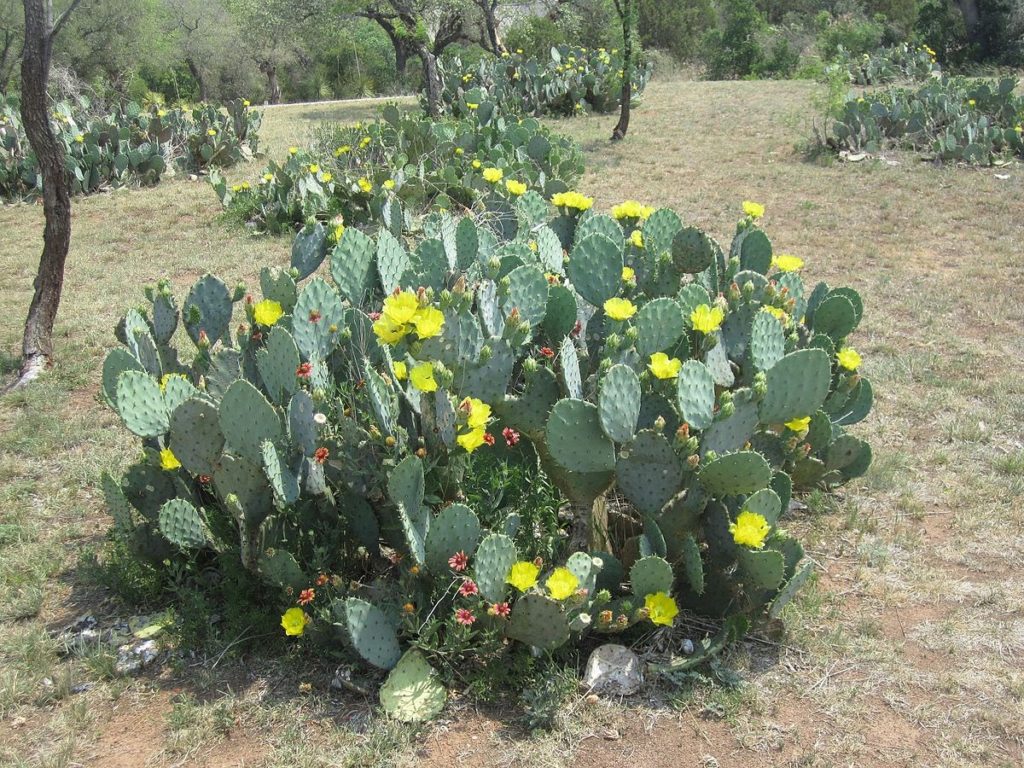
Texas prickly pear is a colorful specimen cactus with green or blue-green pads, bright red, orange, or yellow flowers, and purple fruits. The cactus can grow in an erect or spreading habit, and there are some with and some without spines.
- Plant type: Succulent
- Hardiness zones: 8b-10b
- Sun: Full sun
- Soil: Dry soils
- Duration: Perennial
- Height: 3-9 feet
- Maintenance: No required maintenance
Texas sage (Leucophyllum frutescens)
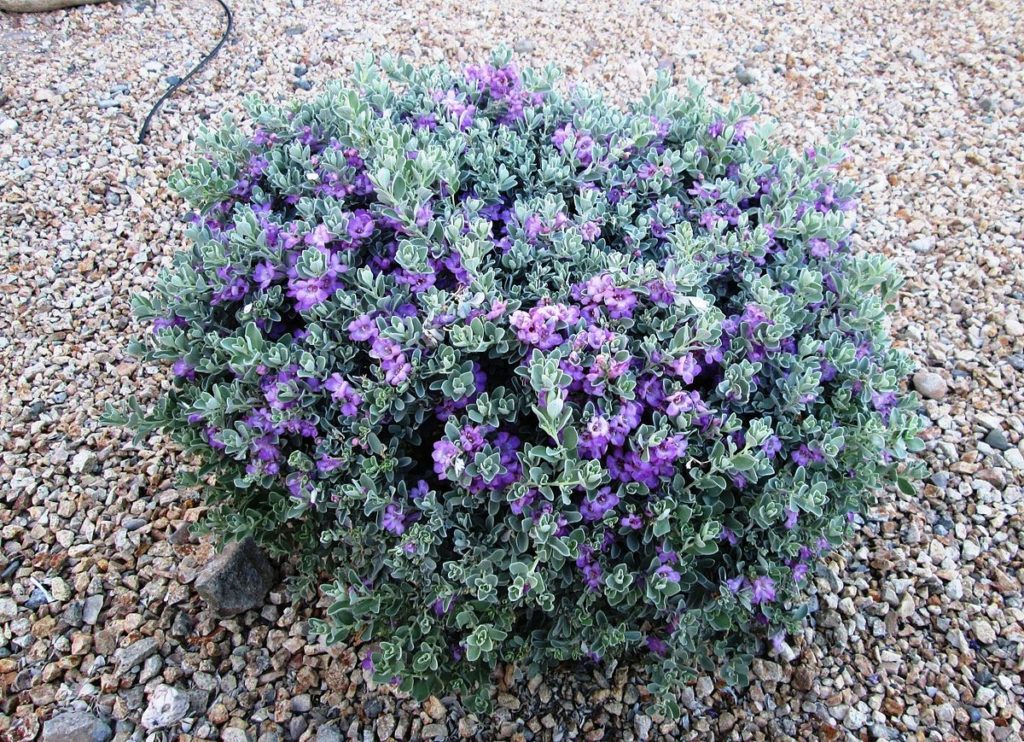
Texas sage, aka cenizo, aka Texas barometer bush, is not in fact a true sage (or Salvia) plant. It’s actually a small shrub with soft, hairy silver-gray leaves and bell-shaped flowers of violet, purple, lavender, or pink that bloom year-round, even in winter.
- Plant type: Shrub
- Hardiness zones: 8a-11b
- Sun: Full sun, partial shade
- Soil: Dry, well-draining soils
- Duration: Evergreen
- Height: 2-8 feet
- Maintenance: Prune regularly to keep the plant compact.
Native Plants of West Texas
Arizona cypress (Hesperocyparis arizonica)
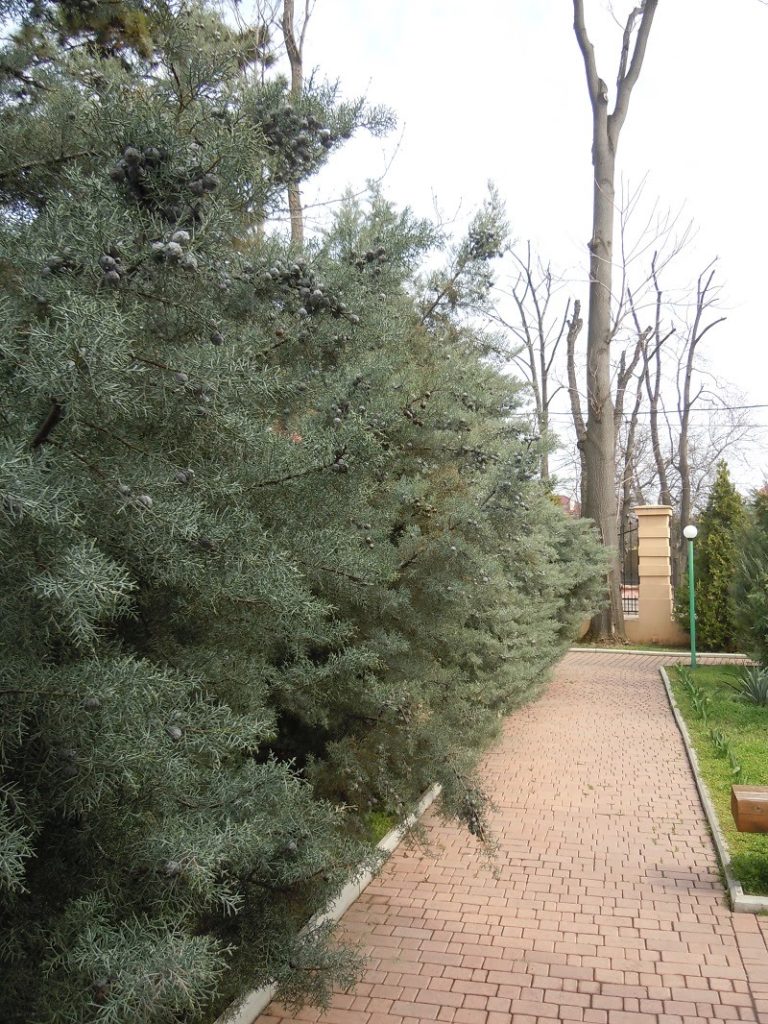
This deer-resistant, fast-growing tree has the classic pyramid shape of a cypress (think Christmas trees). The Arizona cypress has soft, gray-green to blue-green foliage, and its bark changes color from tan to plum to red as the tree ages.
- Plant type: Tree
- Hardiness zones: 7a-11a
- Sun: Full sun
- Soil: Well-draining sandy, loam, or clay soils
- Duration: Evergreen
- Height: 30-40 feet
- Maintenance: Water at least every other week during growing season.
Desert willow (Chilopsis linearis)
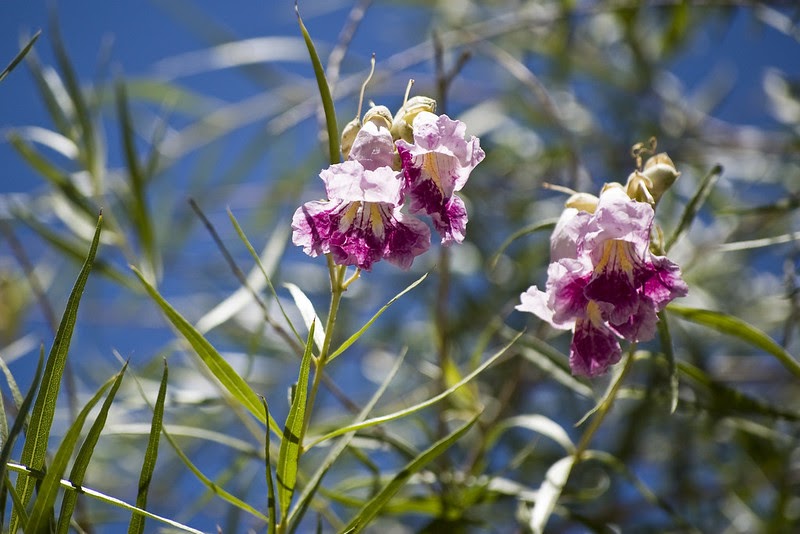
A desert willow can function as a large shrub or small tree in your landscape depending on how you prune it. This fast-growing, drought-tolerant plant has slender branches, a twisting trunk, and exotic-looking flowers in different shades of white, pink, purple, or violet in summer.
- Plant type: Shrub or tree
- Hardiness zones: 7b-11b
- Sun: Full sun
- Soil: Any well-draining soil
- Duration: Deciduous
- Height: 15-40 feet
- Maintenance: Cut back during winter to encourage new growth and blooms, and water occasionally during long periods of drought.
Flame acanthus (Anisacanthus quadrifidus)
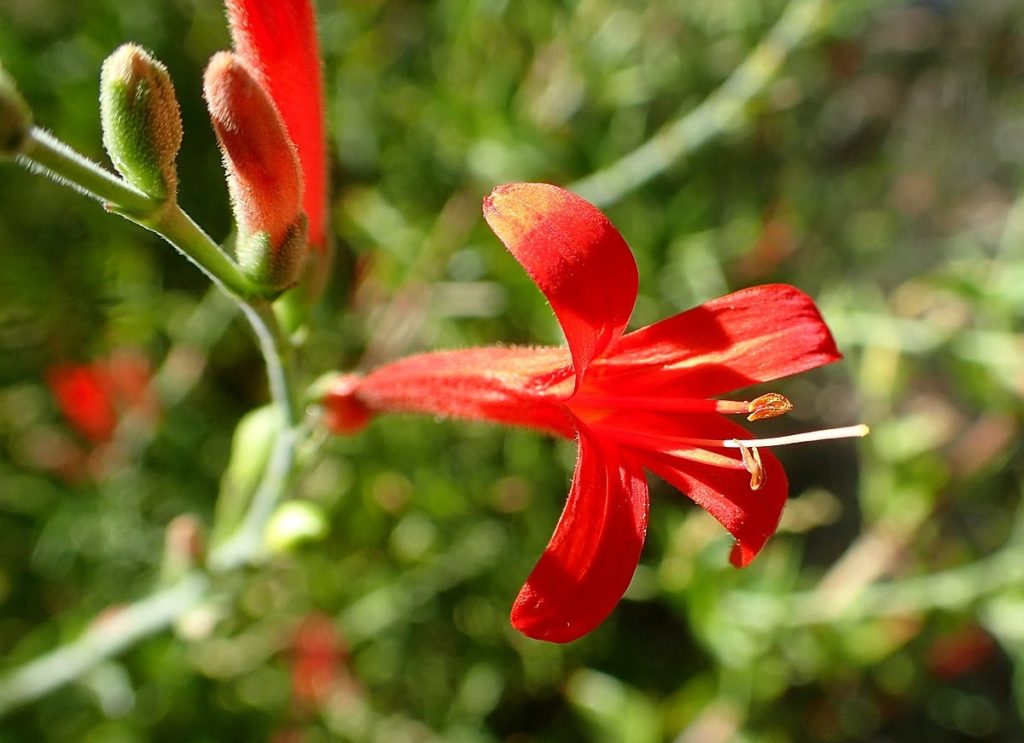
Flame acanthus is a spreading shrub that’s popular in Texas landscapes because of its showy, tubular, bright red flowers that bloom in mid-summer and early fall when many other plants are out of season. Those flowers are highly attractive to hummingbirds, so some people refer to the plant as hummingbird bush.
- Plant type: Shrub
- Hardiness zones: 7a-10b
- Sun: Full sun, partial shade
- Soil: Tolerates most soil types
- Duration: Deciduous
- Height: 3-5 feet
- Maintenance: Prune each winter to encourage compact growth and more blooms.
Lechuguilla (Agave lechuguilla)
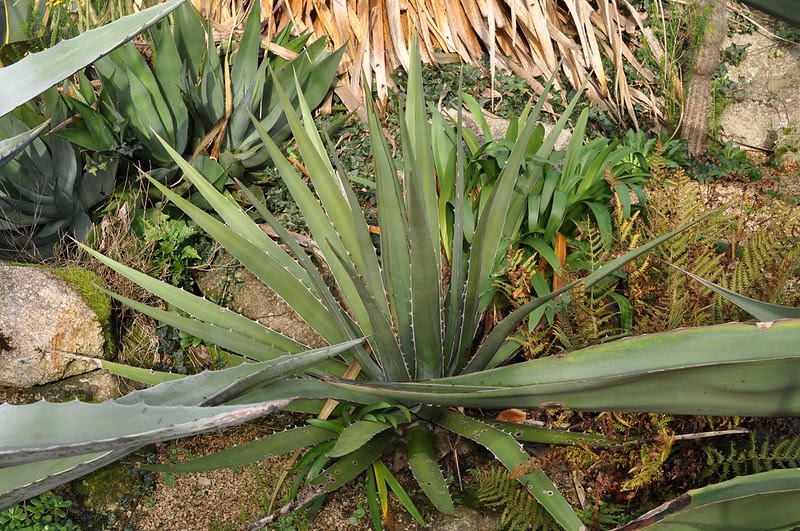
This yellow-green rosette succulent won’t produce a flower stalk until it’s about 12 to 15 years old, but when it finally does bloom, the flower can reach a spectacular height of 15 feet. Be careful where you plant the lechuguilla, nicknamed “shin dagger” for the sharp spines on its leaves.
- Plant type: Succulent
- Hardiness zones: 8a-10b
- Sun: Full sun
- Soil: Dry rocky soils
- Duration: Perennial
- Height: 1-2 feet without flower stalk, up to 15 feet with flower stalk
- Maintenance: Remove dead growth.
Purple muhly (Muhlenbergia rigida)
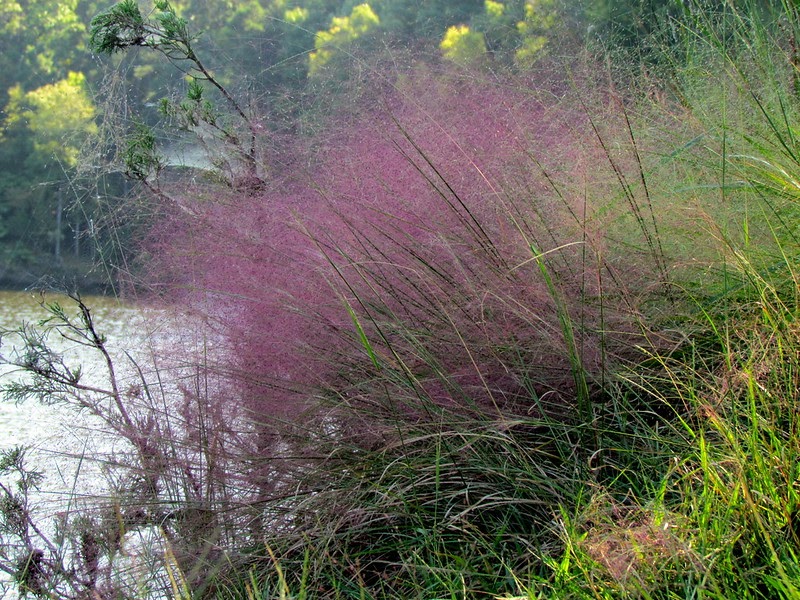
Purple muhly is an ornamental grass that grows in tufts, with purple seed heads developing at the tops of stems and giving the grass a cloud-like appearance. As with most muhly grasses, this one is good for mass plantings and landscape bed borders.
- Plant type: Ornamental grass
- Hardiness zones: 5b-9a
- Sun: Full sun
- Soil: Dry rocky or gravelly soils
- Duration: Perennial
- Height: 2-3 feet
- Maintenance: Cut back to the ground in late winter to prepare for new growth.
Yellow bells (Tecoma stans)
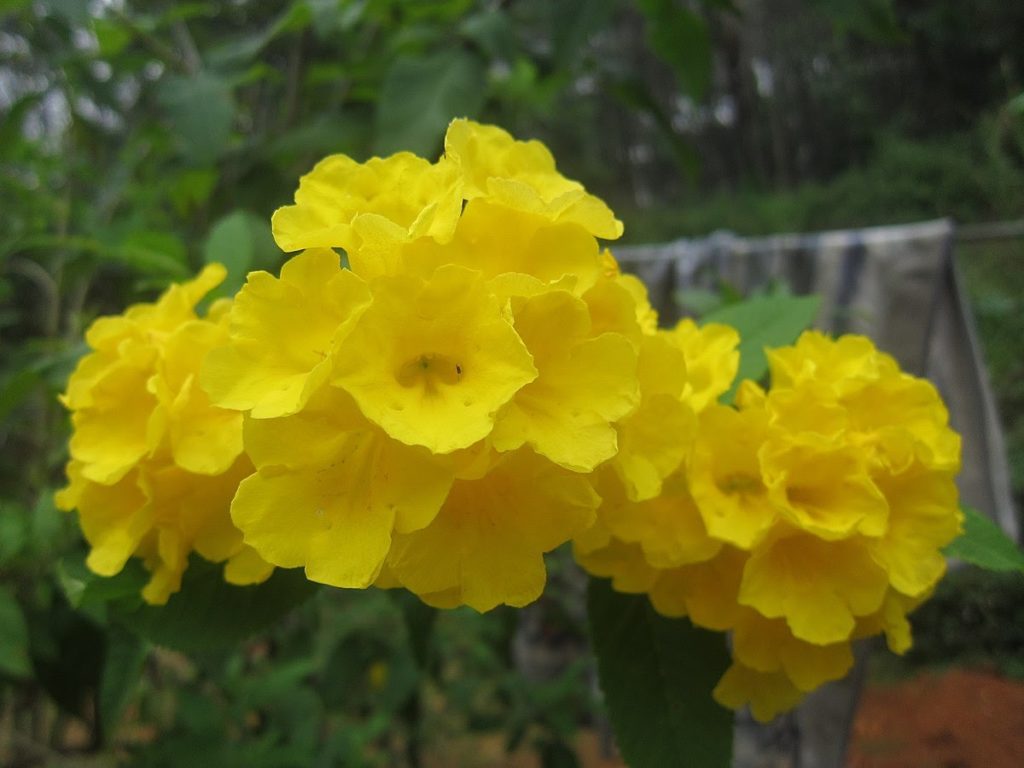
Also known as esperanza, this decorative shrub is useful for landscaping in Texas because it is drought-tolerant and makes a huge visual impact with its showy, trumpet-shaped, bright yellow flowers. Because they’re so popular, there are many cultivars of yellow bells with different characteristics.
- Plant type: Shrub
- Hardiness zones: 7a-10b
- Sun: Full sun, partial shade
- Soil: Well-draining rocky, sandy, loam, or limestone soils
- Duration: Deciduous
- Height: 3-6 feet
- Maintenance: Remove spent flowers to encourage more blooms.
For more information about the hundreds of Texas native plants, check out Texas A&M University’s native plant databases for trees and shrubs. Lady Bird Johnson Wildflower Center’s extensive database of native plants throughout North America is another great resource for Texans, as it includes lists of 100+ plants suited for each specific region of Texas.
Adding native plants to your yard or a landscaping project can be a fun DIY project, but if you need more help, talk to a Texas landscaping expert if you need help selecting plants for your landscape. Whether you’re in Austin, Houston, Mesquite – or anywhere else in the great state of Texas – LawnStarter can connect you with passionate lawn care and landscaping pros with helpful advice.
Main Photo: Prickly pear cactus and Texas lantana / Credit: Needpix
